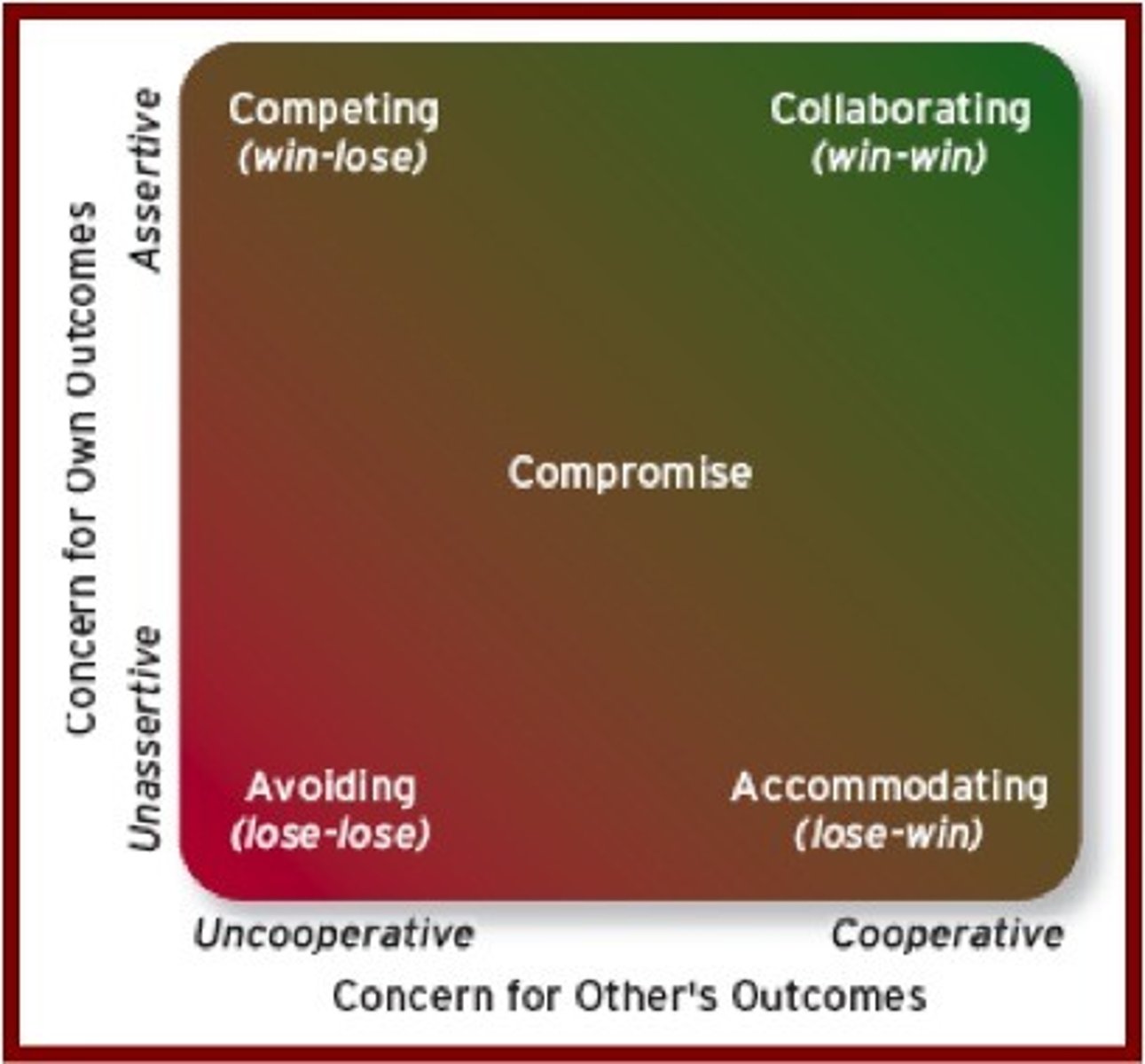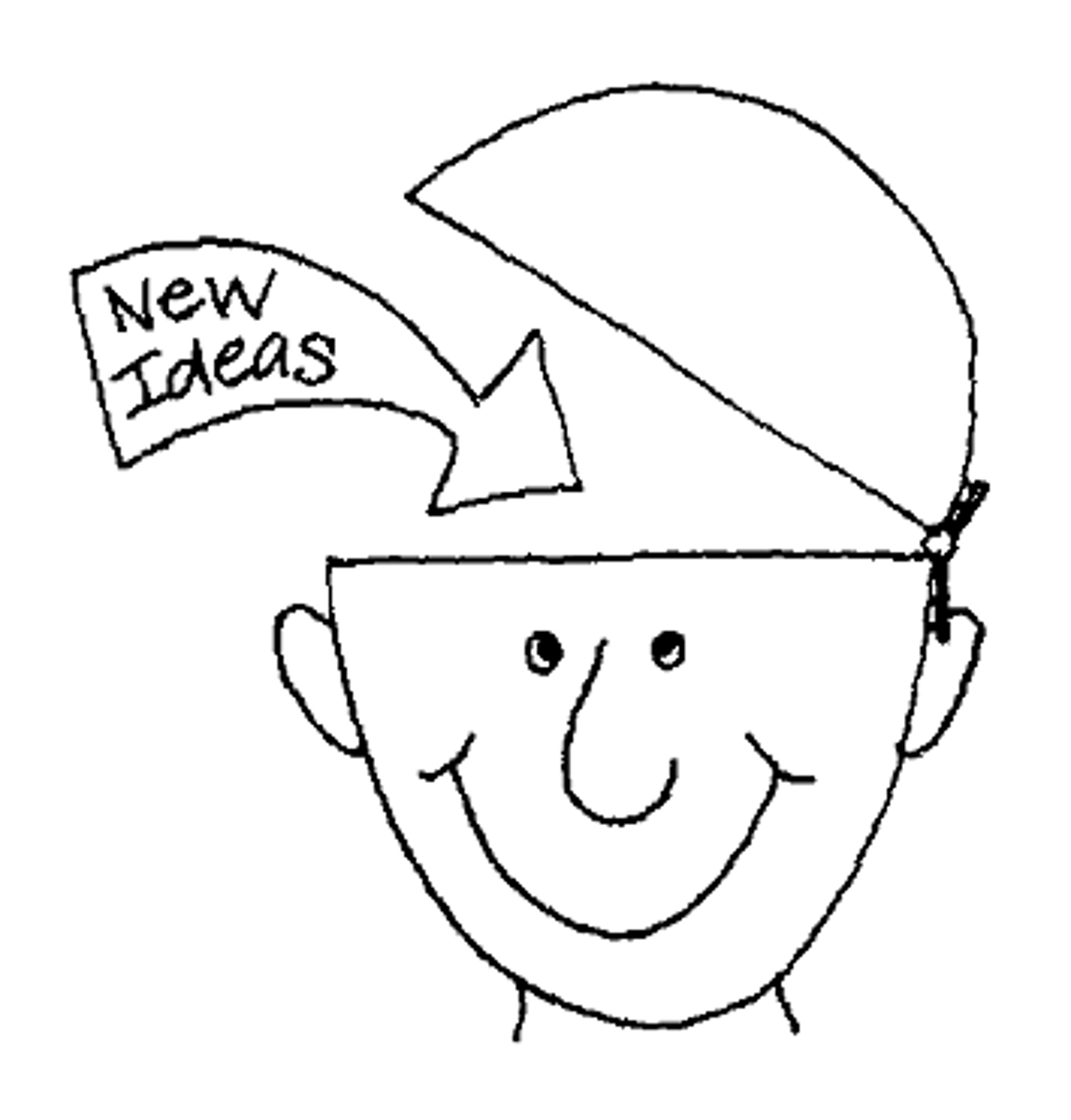MGT 18 Final
1/33
There's no tags or description
Looks like no tags are added yet.
Name | Mastery | Learn | Test | Matching | Spaced |
|---|
No study sessions yet.
34 Terms
Coach K Interview on Duke Basketball- how he develops team leadership
Empower players (even the best players need motivation) to take responsibility both on & off the court by creating a culture where players learn to trust one another, communicate effectively, and hold each other accountable. By giving players opportunities to lead in different situations, Coach K cultivates a sense of ownership and unity within the team.
--> Ask the team what's their purpose + make guidelines (enforce the rules themselves) by using your own personality + values.
Martin Davidson- Managing conflict and conflict styles
1. Collaborating (I win, you win)
2. Competing (I win, you lose)
3. Compromiser (Both win some, lose some)
4. Accommodating (I lose, you win)
5. Avoiding (I lose, you lose)

Erin Meyer- 8 behavioral scales on cultural competence.
1. Communicating (low; precise, clear vs high context; sophisticated, nuanced)
2. Evaluating (Direct vs Indirect negative feedback)
3. Leading (Egalitarian vs Hierarchical)
4. Deciding (Consensual vs Top down)
5. Trusting (Relationship vs task based)
6. Disagreeing (avoids vs confrontational)
7. Scheduling (Linear vs flexible time)
8. Persuading (Specific vs Holistic)
Erin Meyer- navigating the cultural minefield (4 rules)
1. Don't underestimate the challenge It's not always easy to bridge cultural gaps. Management styles stem from habits developed over a lifetime, which makes them hard to change.
2. Apply Multiple Perspectives Where a culture falls on a scale doesn't in itself mean anything. What matters is the position of one country relative to another.
3. Find the Positive in Other Approaches It's important to think not just about the lower-level person's responsibility to follow, but also about the responsibility of the higher person to protect and care for those under him.
4. Adjust, and Readjust, Your Position Widen your comfort zone so that you can move more fluidly back and forth. You might need to go back to square one. Consider which leadership styles are most effective in disparate localities and with people of diverse nationalities.
Margaret Heffernan - TED Talk on Dare to Disagree
Openness invites conflict (disagreement) and conflict leads to opportunity --> Bring up in a way that its not accusatory (phrase it in a way so it shows that you have a problem with the issue)
Johnson Vickberg and Christfort, et al- Spotlight on the New Science of TeamChemistry
4 work styles~ give leaders & teams a common language for understanding how people work.
1. Pioneer- Ernest Shackleton
Adaptable, exploratory, novelty seeking, spontaneous, risk taker, energetic, outgoing, expressive, creative, brain-stormer.
2. Driver- Teddy Roosvelt
Analytical Decision-Maker, Determined, Disciplined, Risk Taker, Tough/Resolute, Ambitious, Intensely Curious, Competitive, Goal-oriented, Logical and Experimental.
3. Guardian- Queen Victoria
Methodical, Controlled, Detail Oriented, Respectful, Meticulous, Realistic, Planners, Risk, Averse, Reserved, Conventional.
4. Integrator- Nelson Mandela
Empathic, Emotionally Expressive, Consensus Oriented, Ambiguity Tolerant, Diplomatic, Optimistic, Values Relationships, Contextual, Trusting, Big Picture Thinker.
Williams, Joan C. and Mihaylo, Sky - Strategies to foster equity and inclusion
1. Insist on a diverse pool (make it clear that you want true diversity)
2. Establish objective criteria, define "culture fit", and demand accountability.
3. Limit referral hiring (reach out to women and minority groups)
4. Structure interviews with skill-based questions.
Joan C. Williams, Sky Mihaylo- Ways to change a problematic dynamic
1. Set up rotations for office housework & don't ask for volunteers
2. Mindfully design & assign people to high-value projects
3. Acknowledge the importance of lower-profile contributions
4. Respond to double standards, stereotyping, "manterruption," "bropriating," and "whipeating."
5. Ask people to weight in
6. Schedule meetings inclusively
7. Equalize access proactively
Grosyberg & Conolly- CEO view of diversity in organization
Approached inclusivity as a personal mission + important role of personal experience.
--> Practices that make the difference
1. Measure diversity & inclusion
2. Hold managers accountable
3. Support flexible arrangements
4. Recruit & promote diverse pools of candidates
5. Provide leadership education
6. Sponsor employee resource groups + mentoring programs
7. Offer quality role models
8. Make the chief diversity officer position count.
Chimamanda Adichie TED Talk- Danger of a single story
Danger: It robs people of dignity, emphasizes how we are different rather than how we are similar.
Stereotypes: The problem is that they aren't true, it's that they are incomplete- make one story the only story
Kendra Cherry- Big 5 Personality Traits
Openness Conscientiousness
Extraversion
Agreeableness Neuroticism

Openness
High: Very creative, open to try new things, Focused on tackling new challenges, Happy to think about abstract concepts.
Low: Dislikes change, doesn't enjoy new things, resists new ideas, not very imaginative, dislikes abstract/theoretical concepts.

Conscientiousness
High: Spends time preparing, finishes important tasks right away, pays attention to detail, enjoys having a set schedule.
Low: Dislikes structures/schedules, Makes messes & doesn't care of things, fails to return things/put them back, procrastinates important tasks, fails to complete necessary or assigned tasks.

Extraversion
High: enjoys being center of attention, likes to start conversations, enjoys meeting new people, has a wide social circle of friends/acquaintance, finds it easy to make new friends, feels energized when around other people, say things before thinking them.
Low: Prefers solitude, feels exhausted when having to socialize a lot, find it difficult to start conversations, dislikes making small talk, carefully thinks things through before speaking, dislikes being center of attention.
Agreeableness
High: Has a great deal of interest in other people, cares about others, feels empathy & concern for others, enjoys helping & contributing to the happiness of others, assists others who are in need of help.
Low: Takes little interest in others, doesn't care about how other people feel, has little interest in other people's problems, insults & belittles others, manipulates others to get what they want.
Neuroticism
High: experiences a lot of stress, worries about many different things, gets upset easily, experiences dramatic shifts in mood, feels anxious, struggles to bounce back after stressful events.
Low: Emotionally stable, deals well with stress, rarely feels sad/depressed, doesn't worry much, is very relaxed.

Agressive communication
Domineering, insisting, win/lose, not listening. (interrupting, loud)
Passive communication
Not expressing needs, self-devaluing, waiting to be led. (little eye contact, quiet, hesitant voice)
Assertive communication
Honest, open direct, recognizes own rights, listens to other's needs. (Firm, clear voice, steady eye contact)
Assertive communication skills (Listening & speaking up)
-Saying "yes" when you want to and "no" when you mean "no."
-Agreeing to do something, but not just to please someone else.
-Deciding on, and sticking to, clear boundaries.
- Being OK to defend your position, even if it provokes conflict.
- Being confident in the face of conflict should it occur.
- Understanding how to negotiate when two people want different outcomes.
- Having a positive and optimistic outcome.
Assertiveness is NOT
-A way to win every argument
-A way to get what you want
-A way to get others to feel like you feel
-A way to get others to think like you
-A way to tell everyone everything all the time
Formula for assertive communication
I feel A when my team [or name a team member] B, and I would like us to discuss or resolve this by C.
A = your feeling(s)
B = your team's or team member's behavior
C = your proposed resolution or idea for discussion
Margaret Heffernan TED Talk- "Super-chickens"
"Superchicken"- only succeeded by diminishing the others.
3 characteristics of a higher achieving group:
- High degree of social sensitivity to each other
- Gave equal time to each other (no one was dominated or a passenger)
- Had more women in them
Key= Social Connectivness~ Ideas can flow/grow + work among people who are good at giving/getting help.
Ernesto Sirolli- Advice about cultural competency
To be successful you have to look/listen at the peoples/cultures wants/needs.
- 1st principal of aid= Respect
- His company helps bring out others peoples dreams to reality & the passion people have for their own growth is what helps him help them.
Brian Little- "How Our Projects Shape Our Personalities"
Personal projects~ are all about the future, they guide us, and we can trace our challenges and successes (As projects goes, so does your life)
+ Viewing personality as project-based (rather than trait-based) emphasizes potential for change --> Traits influence project choice and perception.
6 Most common personal project categories
1. Occupational/work
2. Interpersonal
3. Maintenance
4. Recreational
5. Health/Body
6. Intrapersonal (self-improvement)
Simon Sinek TED Talk- Leadership & the game of business
1st criteria to be a leader is that:
You want to be one (comes with greater responsibility)
- You choose this lifestyle (you have to become/be/think yourself as a student not as an expert)
- Always talk about leadership, reading, watch talks, go for dinner with colleagues, etc.
Shared incentive
- Recognition & reward: Compliment publicly, criticize privately
- Give people promotions when there's a behavior you want to promote like teaming
- Ask people to solve things together
- When one person complains they are doing all the work you have to find out if they are struggling with something (push back)
Leading by example
- Asking for help
- Work together (mix it up, work with younger people, etc)
How do you enforce accountability?
-Giving the parameters instead of the answers
- Let them make their own decisions
Pellegrino Riccardi TED talk- cross-cultural communication
The problem with working with different cultures: everyone has different ideas of what accepted and familiar means --> you have to find out what the underlying values are.
Tip: CURIOSITY- Ask a question, follow a key word you hear, continue the conversation + Take the best of the different cultures and combine them to make a new culture= create a global mindset.
Ellington-Booth, B. & Cates, K.L- "Growing Managers: Moving from Team Member to Team Leader"
Shift in focus: From personal contribution to team success + Delegating & Trusting others
Develop Leadership Skills: Communication, emotional intelligence, manage both people and problems, Problem-solving & Decision-making..
Supporting Team Development: Mentorship & coaching, recognizing others strengths, navigating challenges, growth mindset.
Epler, Melinda B- "Managers, Here's How to be a Better Ally in the Remote Workplace."
Allies: People who make an effort to learn about their colleagues' unique experiences, unlearn their biases and stereotypes, and relearn new skills (with an understanding that there is an imbalance in opportunity).
--> Learn, unlearn, relearn + interrupt micro-agressions & check in with those who experienced it, Advocate for people & team's mental health, provide regular constructive feedback & micro-affirmations.